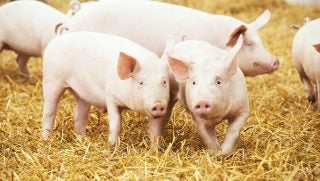BASF has joined Yara International in the opening of a new world-scale ammonia plant in Freeport, Texas. The $600-million, state-of-the-art facility uses a cost-efficient and sustainable production process, based on by-product hydrogen instead of natural gas.
Yara Freeport LLC is owned 68 percent by Yara and 32 percent by BASF. The plant, located at BASF’s site in Freeport, has a capacity of 750,000 metric tons of ammonia per year. Each party will off-take ammonia according to their ownership share.
“Together with our partners at BASF, we built a world-scale ammonia plant that not only raises the bar in terms of safety, efficiency and quality but also applies the principles of industrial symbiosis by using a by-product as feedstock for ammonia production,” says Yara President and CEO, Svein Tore Holsether. “Yara Freeport strengthens our leading position in the global ammonia market and expands our production footprint in North America.”
“This joint venture with Yara not only strengthens our production Verbund at the Freeport site, it demonstrates BASF’s commitment to investing in North America,” said Wayne T. Smith, member of the Board of Executive Directors of BASF SE and Chairman and CEO, BASF Corporation. “The new plant allows us to take advantage of world-scale production economics and attractive raw material costs to strengthen the competitiveness of our customer value chain in the region.”
Conventional ammonia plants use natural gas to produce the hydrogen needed during ammonia production. Yara Freeport’s hydrogen-based technology allows the plant to forego this initial production step, leading to lower capital expenditure and maintenance costs. By using hydrogen, which originates from the production processes of various petrochemical plants nearby, Yara Freeport safeguards resources and mitigates environmental impact.
A long-term supply agreement for hydrogen and nitrogen with industrial gases company Praxair Inc. links feedstock cost to the advantageous natural gas prices on the U.S. Gulf coast.
BASF will use its share of ammonia off-take to produce polyamide 6, which is commonly used in the production of carpet fibers, packaging and casings for the wire and cable markets. Polyamide 6 for injection molding is used in high-performance engineering plastics for automotive applications. Yara will market its share of ammonia to industrial customers and the agricultural sector in North America. To support the new plant, Yara built an ammonia storage facility at Port Freeport. BASF upgraded its existing terminal and pipeline assets.


